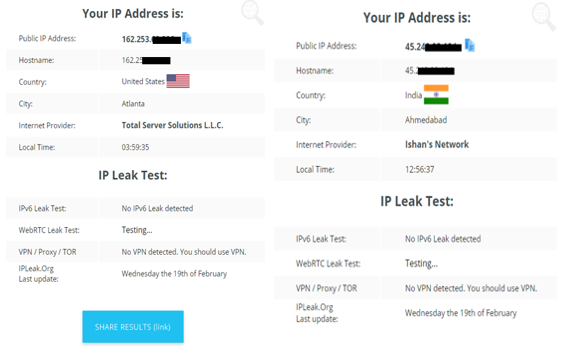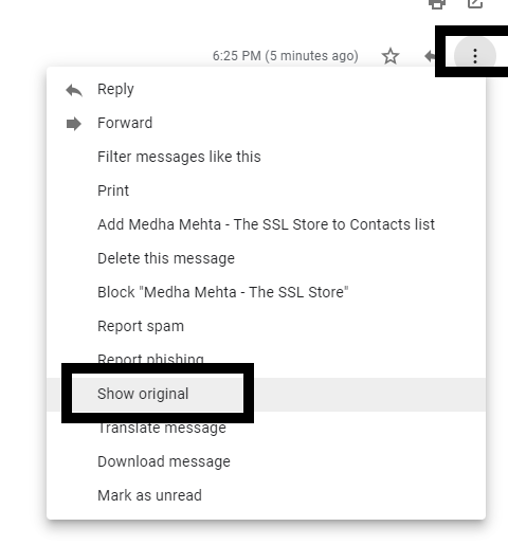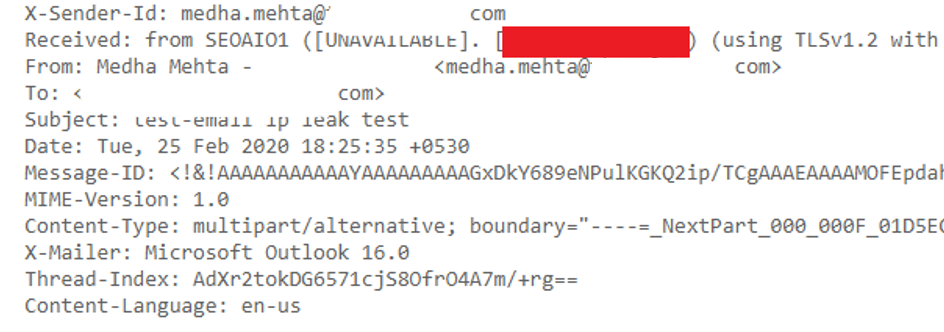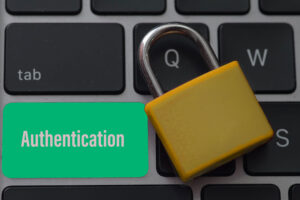IP Leak Test — Quick Tips to Check Whether Your IP Is Leaking
Is your VPN leaking? Here’s how to identify IP leaks and ways to prevent them
Hey, your IP’s showing.
Made you look. But if you’re using a VPN, you may want to run an IP leak test anyhow just to make sure it’s not.
All computers, devices, and servers connected to the internet have a digital identity in the alphanumeric form, which is known as an Internet Protocol (IP) address.
IP address is assigned by your internet service provider (ISP) — from where you are getting the internet — such as Wi-Fi, office internet, home internet, cell phone internet data, etc
Just by knowing an IP address, you can find out a device’s geographical location, internet provider’s name, local time, and even the users’ web browsing behaviors in some cases. The IP address of any device or server can be easily checked by anyone on the internet.
To hide their IP addresses, people use virtual private networks (VPNs). But sometimes VPNs aren’t successful in hiding the original IP addresses and end up revealing them to the outer world. This is known as an IP leak and this is where an IP leak check comes in handy.
In this article, we’ll cover how to conduct an IP leak test to discover such leaks. We’ll also talk about the various IP leak types and ways to prevent them.
How to Conduct an IP Leak Test
People perform an IP leak test is to check whether your device’s original IP address (i.e. IP provided by ISP) is leaking even after installing a VPN — and if it is leaking, what other details it’s revealing about your device to others. Follow the steps below to perform an IP leak check:
Step 1: Use an IP Leak Test Tool
Turn off your VPN and go to any of the following websites to conduct your IP leak test:
Be sure to jot down this IP address as it’s your original ISP IP address.
Step 2: Choose a VPN IP Address Location
Next, turn on the VPN and select the IP address for your desired geographical location.
Step 3: Re-Check Your IP Address
Now, go back to the website you visited in step one where you conducted the first IP leak test and refresh the page.
If you see the new IP address for the location you selected on the VPN software, it means the VPN is successfully hiding your IP address. If you still see your original IP address and location, your device is suffering from an IP leak — hence, the VPN isn’t working properly.
Please note that all of these websites show different details in their IP leak test results. However, the common elements of these reports are your:
- public IP address,
- internet service provider,
- geographical location, and
- local time-zone.
Check out the before and after screenshots from my own IP leak test (below). The former was taken when my VPN was turned off. The latter was taken after turning on the VPN and selecting an IP address of a VPN server located in India.

4 Common Types of IP Leaks
Your IP address can be leaking in various ways. So, for example, it might not be leaking while visiting some websites, but it may leak while downloading a file from Torrent or engaging in another activity. So, it’s crucial to identify which type of leak your device is experiencing. Here are four of the most common types of IP leaks:
1. DNS IP Leak
IP addresses are made of a long string of numbers and alphabets, which are difficult for humans to memorize. For humans, web surfing while using a domain name (like SectigoStore.com, google.com, amazon.com, etc.) is more convenient. This is where a domain name system (DNS) comes in handy.
A DNS works like a mediator between humans and servers via their browsers. When a user tries to connect to a website, the DNS translates that domain name to an IP addresses, which enables a browser to request a specific website from a server to connect to it.
But like with most technologies, the domain name system isn’t perfect. The downside of the DNS is that it keeps a log of all user activities, including:
- which websites have been visited by which IP addresses (i.e., the website visitors),
- their geographic locations, and
- the list of pages they visited after arriving at the website.
All ISPs, by default, enable DNS. That means your internet service provider can know your entire browsing history.
When you use a VPN, it hides your original ISP DNS under the anonymous VPN DNS. But sometimes, when users request the DNS to open a website, it bypasses the VPN’s IP address and accesses the user’s ISP IP address directly, causing what’s called a DNS leak.
How to Conduct a DNS IP Leak Test
- Turn off your VPN.
- Go to dnsleaktest.com or dnsleak.com (or any other DNS leak test tool you trust). Make sure you’re not using any VPN providers’ DNS leak testing websites, though.
- Write down the resulting information the page displays. This is going to be your ISP IP address, ISP’s name, and geographical location.
- Now, turn on the VPN and select any other geographical location of your choice.
- Once again, go to the DNS leak checking website and conduct the test. Now, you should see the different IP addresses, internet provider’s name, and geographical location this time. If you still see your original ISP IP address and other details, your VPN is suffering from a DNS leak.
How to Prevent a DNS Leak
While purchasing a VPN, you should always check whether it has a DNS leak prevention feature. But if your current VPN doesn’t have this feature, you can manually change the DNS configuration. You can use this Google’s DNS guide to switch your ISP’s DNS to Google’s public DNS.
2. Torrent IP Leak
While using Torrent, your file-sharing client can monitor all your activities using your ISP IP address. But with VPN, you can disguise your true the identity from the Torrent client. Plus, all the activities and files will get encrypted, too. However, sometimes, your Torrent client bypasses the VPN IP address and can see the ISP IP address, which is known as Torrent IP leak.
How to Conduct a Torrent IP Leak Test
To check for an IP leak via Torrent:
- Open a Torrent privacy checker tool. (We have linked torrentprivacy.com, but you can choose any tool you want to use.)
- Download the test file from the link provided on the website, which is also known as the magnet file.
- Upload the test file to the Torrent client.
- Check which IP address the Torrent privacy checker tool is displaying. If it’s showing the IP address and geographical location you set on your VPN, it means your anonymity is maintained by the VPN while Torrenting. If it shows your ISP IP address, your system is suffering from the Torrent IP leak.
How to Prevent a Torrent IP Leak
- Go to your VPN setting. Disable both the DHT and PEX feature and the split tunneling feature.
- Always enable the kill switch feature of the VPN. If your VPN doesn’t have it, use a third-party VPN connection monitoring tool such as VPN Watcher that offers the kill switch feature and prevents an IP leak when the VPN is down.
3. WebRTC IP Leak
All the major web browsers (such as Google Chrome, Mozilla Firefox, Safari, Opera, and Yandex) have a feature called web real-time communication, or WebRTC. This tool enables video calls, file sharing, live chats, voice calls, etc. But websites can trick the browsers’ WebRTC feature into bypassing the website visitors’ VPN IP address and revealing their real IP address through the use of JavaScript.
Even though there are tools available to conduct a WebRTC leak test, just do so with caution. You can’t rely on them 100% because you don’t know which websites are using special JavaScript to find out your real IP via WebRTC.
How to Prevent a WebRTC IP Leak
You can install an add-on or extension that disables the WebRTC vulnerability. Let’s explore how this works in Google Chrome and Mozilla Firefox:
Install a WebRTC Leak Prevention Tool in Chrome
- Go to the Chrome Web Store.
- Search for WebRTC.
- Choose the extension such as WebRTC Leak Prevent or WebRTC Prevent Shield. And click on Add to Chrome and activate it.
Install a WebRTC IP Leak Prevention Tool in Firefox
- Type about:addons in the Firefox address bar.
- Search WebRTC in the search bar.
- A new window will pop-up. Select one of the suitable add-ons and add it to Firefox.
- Enable the add-on after it has successfully installed.
4. Email IP Leak
When you send an email to someone, some email clients send your IP address to your email recipients as a part of the header information. When this occurs, it means you’ve got an email IP leak. All email clients have different policies about showing IP addresses. Here, we have demonstrated how you can manually check Gmail’s header information:
- Go to Gmail and open an existing email for investigation purposes.
- Now, on the right-hand side, click on the menu (three dots) and go to Show original.

Press Ctrl+F on your keyboard and search for “Received: from.” You might see the sender’s IP address in the place which we have highlighted with red color in the screenshot below.

You can also conduct the email IP leak test with the email IP leak software by following these steps.
- Write down your original IP address and turn on the VPN.
- Go to the Email IP Leak Test website.
- Click on Start.
- Send an email to the given email address.
- Wait for the result. The website will automatically update the result after some time. The results may be delayed, but don’t refresh the page.
As a result, either you will be shown the message “Your email has been received, and it doesn’t leak your IP,” Or it will show which IP address it is leaking. If that IP address is the same as your VPN server’s IP address, you’re still in the safe zone.
However, if it shows your original ISP IP address, your VPN is not working properly.
How to Prevent an Email IP Leak
Unfortunately, you can’t stop email clients from revealing your IP address. However, if they are showing the ISP IP address in the header information, even after you are using VPN, it is a problem. You should discuss this issue with your VPN provider’s support team. They might suggest some security setting tricks to prevent such a leak. If your VPN provider can’t prevent the email client from revealing your original IP address, you should change VPN providers.
Why Is an IP Leak Test Necessary?
If you are wondering why an IP leak test matters, this section will answer that question. You need to understand why people want to hide their IP addresses in the first place.
When the VPN is installed and turned on, your device will be assigned a temporary VPN server IP address to conceal your original IP address (the one issued by your ISP). This VPN server might be located in different cities and countries. You can also manually choose the geographical location to get the IP address from that region. The original IP address would be working in the background because your internet still comes from your regular ISP provider, but then the new VPN IP adds another layer of IP security onto it, like a mask, to hide the original one.
Privacy
Some online marketers track IP addresses to know users’ browsing behaviors. This data helps them target appropriate advertisements based on each user’s individual preferences. Some people consider this advertising technique manipulative or invasive and prefer to hide their original IP addresses by using a VPN.
Geographical Restrictions
Some websites and apps allow access to their content to viewers from specific countries while banning viewership from other regions. VPN software gives you the option to choose an IP address from a variety of different countries, which helps you to bypass such geographical restrictions. (Note: This might be illegal in some cases.) With an international IP address, you can have access to international entertainment such as sports games, television series, music, etc. — all without ever changing your physical location.
Blacklisted IPs
Websites blacklist a user’s IP address and ban them from accessing the website if they suspect that the user has violated rules or is trying to conduct cyber attacks such as DDoS attacks, SQL injections, brute force attacks, etc.But with VPN, users get new IP addresses and they can evade such bans. (However, it’s definitely a red flag from a cybersecurity point of view.)
So, when your VPN leaks your original IP address, it means you can’t hide your online browsing behavior, access geographically-restricted websites, and apps, or visit sites where your IP address is blacklisted. An IP leak test is conducted to show the users whether their VPN is leaking their original IP address.
A Final Word
VPN is a double-edged sword. While concealing the real IP address will give internet users a sense of privacy and access to international entertainment, it can also be misused by cybercriminals. When the original IP is hidden, it becomes challenging to trace the origins of the cyberattacks. Sometimes when websites or apps put the geographical restrictions on some content, they do so for specific reasons, such as being compliant with legal restrictions or security measures. So, if you manipulate your IP address and get caught, the consequences can be dire.
While you should definitely do what you can to prevent an IP leak, make sure you’re not breaking any laws while browsing the internet.














 (53 votes, average: 4.62 out of 5)
(53 votes, average: 4.62 out of 5)






2018 Top 100 Ecommerce Retailers Benchmark Study
in Web Security5 Ridiculous (But Real) Reasons IoT Security is Critical
in IoTComodo CA is now Sectigo: FAQs
in SectigoStore8 Crucial Tips To Secure Your WordPress Website
in WordPress SecurityWhat is Always on SSL (AOSSL) and Why Do All Websites Need It?
in Encryption Web SecurityHow to Install SSL Certificates on WordPress: The Ultimate Migration Guide
in Encryption Web Security WordPress SecurityThe 7 Biggest Data Breaches of All Time
in Web SecurityHashing vs Encryption — The Big Players of the Cyber Security World
in EncryptionHow to Tell If a Website is Legit in 10 Easy Steps
in Web SecurityWhat Is OWASP? What Are the OWASP Top 10 Vulnerabilities?
in Web Security